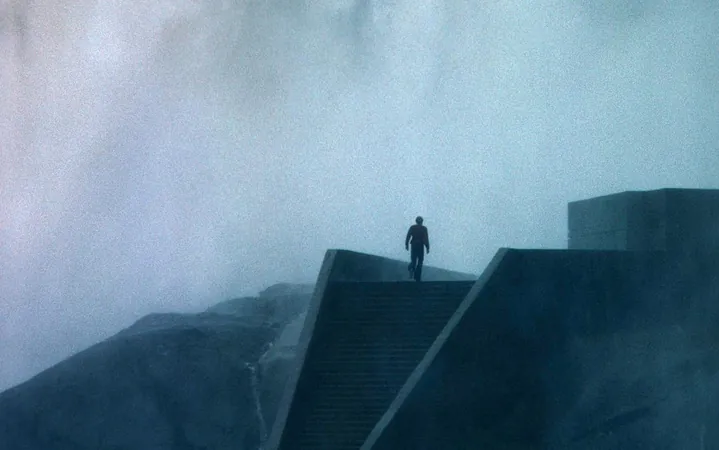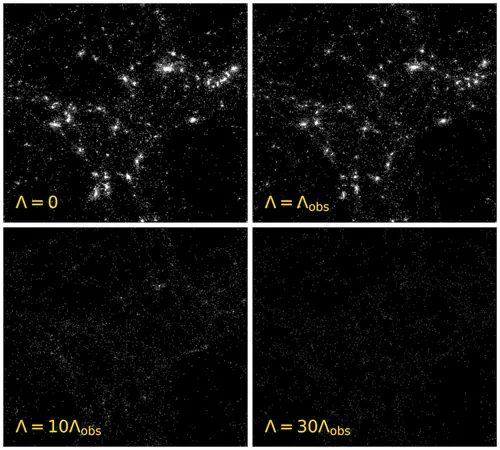
Rethinking the Laws of Nature: From Recipes to Reports
2024-11-14
Author: Ling
Every day we observe a consistent rhythm of nature: the Sun rises, water boils at 100°C, and apples fall to the ground. These elements of predictability are what allow us to plan our lives with some measure of certainty. However, have you ever pondered how different our existence would be if the rules were not so consistent? What if the Sun refused to rise or water boiled at an ever-fluctuating temperature? It’s this stability that leads us to believe in the existence of laws of nature, yet we seldom interrogate what those laws entail or their deeper significance.
Traditionally, we regard science as the authority that outlines these natural laws, as if it presents us with a detailed recipe for understanding the universe. At any given instant, by knowing the entire state of the universe and applying these laws, we can predict the future state of reality, much like following a cooking recipe. This analogy is reminiscent of the "layer-cake model" of the universe, a concept established by 17th-century philosopher René Descartes and later refined by Isaac Newton's gravitational laws.
The layer-cake model offers a reassuring structure, allowing various branches of physics to interconnect. This model is so entrenched in scientific thinking that many practitioners may not even realize they subscribe to it. Yet, the universe is not so straightforward. Modern physics presents substantial counterexamples to this model, suggesting that there is more to uncover.
One significant challenge to the layer-cake model emerged with Einstein's theory of general relativity in the 20th century. The Einstein field equations diverge markedly from the deterministic view presented by earlier theories. Understanding gravitational interactions requires embracing a non-traditional view of spacetime, where the very structure of spacetime acts as an active participant in physical movements, contrasting sharply with the past-determining present suggested by the layer-cake model.
Moreover, classical mechanics introduces additional complexities. The Lagrangian formulation posits that the path of a moving object between two points is the most efficient one. This implies an intriguing possibility: the final state may determine the path taken, suggesting a reverse influence from the future to the past—a notion that jarringly contradicts the layered, sequential model of time.
The world of quantum mechanics opens up further layers of mystery. The existence of retrocausal models, where future states could influence past realities, as well as the work of iconic physicists like John Archibald Wheeler and Richard Feynman, imply that time's arrow is more intricate and less linear than previously thought.
Philosopher Tim Maudlin has defended the layer-cake model, arguing that natural laws are primitive entities in themselves that shape reality. However, despite the surface appeal of an abstract basis for laws, it raises significant questions about how these laws can exert influence on physical entities—an electron cannot choose to disobey a law, creating a metaphysical paradox.
This brings us to the "newspaper model" of laws of nature proposed by David Lewis, which aims to simplify the notion of laws by suggesting they merely describe rather than dictate events in the universe. This model aligns with our observational experiences, as it refrains from assigning an active transformative role to laws akin to articles reporting on events, mirroring Hume's skepticism about causation.
Yet, without an underlying reason for uniformity in these descriptions—why does the billiard ball always behave predictably when struck?—the newspaper model risks becoming nothing more than a series of coincidences. If the laws themselves lack the ability to enforce behavior, how do we reconcile the seeming stability of nature with the fluidity suggested by philosophers and scientists?
The discussion has prompted alternative perspectives, such as the "straitjacket model," which proposes that although laws are primitive, they strictly limit the possibilities of physical states without necessitating a linear flow of time or causation. This model successfully accommodates retrocausality and other non-traditional phenomena.
However, like its predecessors, the straitjacket model fails to address how laws can effectively guide or govern behavior in our physical realm. We remain on the lookout for a metaphysical underpinning that can adequately secure the steady behavior of reality without resorting to abstract principles that lack tangible links to our lived experiences.
In the grand tapestry of scientific inquiry and philosophical understanding, the question remains: what model best encapsulates the remarkable regularities of our world? Do we simply accept a society where the Sun rises each day as mere coincidence? Or can we build on the intuitions of the layer-cake model by creating tailored frameworks for distinct phenomena?
As we unravel the complexities of natural laws, the debate between these competing models illustrates the rich interplay between physics, philosophy, and our ongoing quest to decipher the universe's enigmatic nature. The adventure is just beginning as we navigate this fascinating terrain.





 Brasil (PT)
Brasil (PT)
 Canada (EN)
Canada (EN)
 Chile (ES)
Chile (ES)
 España (ES)
España (ES)
 France (FR)
France (FR)
 Hong Kong (EN)
Hong Kong (EN)
 Italia (IT)
Italia (IT)
 日本 (JA)
日本 (JA)
 Magyarország (HU)
Magyarország (HU)
 Norge (NO)
Norge (NO)
 Polska (PL)
Polska (PL)
 Schweiz (DE)
Schweiz (DE)
 Singapore (EN)
Singapore (EN)
 Sverige (SV)
Sverige (SV)
 Suomi (FI)
Suomi (FI)
 Türkiye (TR)
Türkiye (TR)